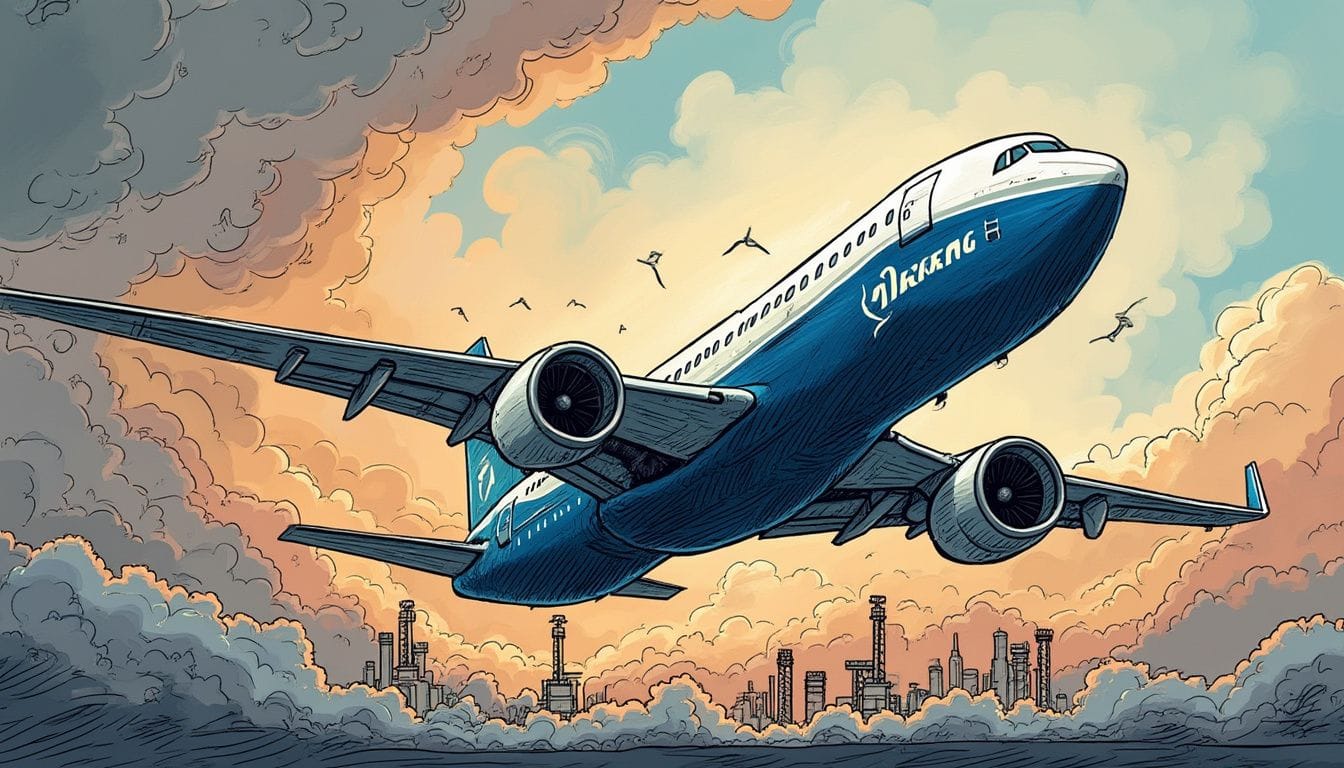A Trusted Global Leader Faces Turbulence
Boeing, an emblematic entity in the aerospace industry known for its significant contributions, including the pioneering 747 which transformed global travel, faces unprecedented scrutiny and criticism due to safety concerns dating back to two catastrophic accidents in 2018 and 2019.
Behind the Carnage: 346 Lives Lost
"The reasonable man adapts himself to the world; the unreasonable one persists in trying to adapt the world to himself. Therefore, all progress depends on the unreasonable man." — George Bernard Shaw
The aviation industry was rocked by two repetitive tragedies involving Boeing 737 Max aircraft—one in Indonesia and another in Ethiopia—resulting in the death of 346 people. These disasters peeled back layers of negligence, specifically focusing on a critical software flaw in the Maneuvering Characteristics Augmentation System (MCAS). This pivotal software, unbeknownst to the pilots, aggressively maneuvered the planes into nosedives from which recovery was impossible. It was these failures that highlighted gross negligence in safety protocols and corporate responsibility.
Systemic Flaws and Procedural Gaps
In the aftermath, investigations unveiled a concerning picture of Boeing’s internal culture—a culture that fostered secrecy over safety and prioritized product turnover over training. Evidence emerged that Boeing intentionally withheld knowledge of the MCAS system's intricacies to avoid extensive pilot retraining, thus cutting costs in the fierce competition with Airbus.
The internal communications, later made public, were damning. Engineers and test pilots had voiced concerns about the MCAS, describing it as "going crazy" in simulations. Nonetheless, the company pushed forward, exposing their act of deliberate concealment.
Regulatory and Legal Battles
Regulatory bodies, pressured by these incidents, have imposed stricter oversight and limitations on Boeing's production capabilities. The company's admission to defrauding the government compounded its woes, tarnishing its reputation and shaking stakeholder trust.
Boeing's systemic importance to the U.S. economy and national security has provoked a delicate balancing act. While governmental and regulatory bodies reprimand Boeing for its lapses, they must also ensure its recovery, given its national significance and the tens of thousands it employs.
Manufacturing Hurdles and Workforce Challenges
The MCAS crisis was a window into broader manufacturing issues. Reports of unfinished and defective parts moving through the assembly line further tarnished Boeing's image, indicating deep-rooted inefficiencies in their production processes.
Personnel cuts during the COVID-19 pandemic exacerbated these challenges. A loss of seasoned employees coupled with supply chain disruptions left Boeing with gaps in both human resources and essential materials needed for production. Many past whistleblowers' warnings of overtime-inflated defect rates went unheeded—situations that continue to reverberate today, stressing the need for a cultural overhaul.
Attempts at Redemption
Following these revelations, Boeing pledged reforms, including the establishment of enhanced safety protocols and management systems. Leadership changes, spearheaded by the appointment of Dave Calhoun, signaled an intent to restore confidence. Still, the journey to reclaim trust and restore operational integrity remains steep.
The ongoing struggle with production schedules and striking workers indicates significant hurdles remain, further compounded by Boeing's strained relationship with some of its suppliers. The pursuit of a massive $21 billion equity capital raise illustrates the financial pressures the company faces as it strives for recovery and realignment with safety and quality standards.
Cultural Shifts and Leadership Accountability
"In a rapidly changing world, the greatest risk is not taking any risks at all." — *Mark Zuckerberg*
To regain its former prestige, Boeing must foster a work environment encouraging transparency and accountability. The shift towards an atmosphere that values input from all employees—allowing them to voice concerns without fear of retribution—will only fortify Boeing's renewed emphasis on safety and adherence to quality standards.
The steps towards improvement in Boeing’s cultural fabric must be profound; it must transform from a pressure cooker of rushed outputs to a bastion of quality-assured craftsmanship. As former CEO Muilenberg learned, recovery is impossible without prioritizing these ethical foundations.
Future Pathways
Amidst the storms of bad press and deep-seated operational inefficiencies, perhaps it's Boeing's storied resilience that offers a glimmer of hope. The aviation world needs multiple robust manufacturers, and Airbus' stiff competition underlines the battle Boeing must contend with—not merely to regain market share, but to restore a legacy.
In short, Boeing’s path ahead is laden with challenges but not devoid of opportunities. Fine-tuning their manufacturing ethics, honoring their commitment to safety, and restoring stakeholder faith are key ingredients for their ascendancy.
To Boeing, and the countless who pin their hopes on its revival, the mantra is simple: the sky's the limit, provided they cultivate the right wings to soar once more.
SAFETY CONCERNS, YOUTUBE, MCAS SYSTEM, AEROSPACE INDUSTRY, MANUFACTURING CHALLENGES, BOEING, AVIATION CRISES

